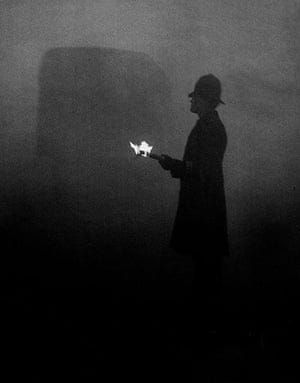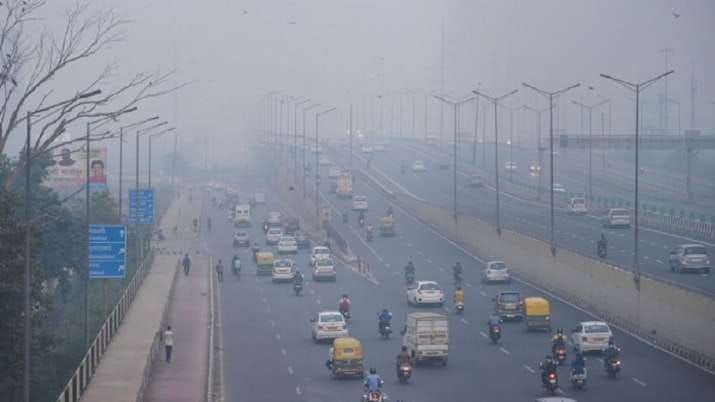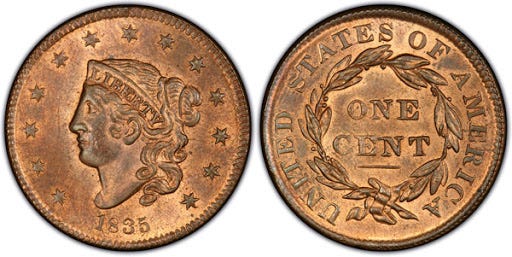Each week, I curate and spotlight the most curious content I find. This week highlights pollution two ways, the Portland Penny, Deep Dish Pizza and Muzak.
If you’re enjoying the newsletter, I’d love to hear from you! Feedback is always welcome. If you were forwarded this newsletter or found the link on social, you can subscribe here:
The Great Smog of London
The 1940-1950s, the pollution from coal was off the charts, causing so much smog that it not only killed thousands of people each yet, but resulted in “The Great Smog” of 1952.
On Friday 5 December 1952, a thick yellow smog brought the capital to a standstill for four days and is estimated to have killed more than 4,000 people. London's air may appear much cleaner today, but is still dangerously polluted. The coal pollution that caused the infamous 'pea soupers' has been replaced by invisible pollution – mainly from traffic fumes – resulting in 13,000 early deaths each year in the UK and 4,300 in London.
The smog was so bad, that at the apex, 4000 people died in a single week by falling into the Thames river due to not being able to see it. This situation helped the UK pass the world’s first air pollution laws, The Clean Air Act of 1952, which interestingly repealed in 1993.
The Clean Air Act 1956 was an Act of the Parliament of the United Kingdom enacted principally in response to London's Great Smog of 1952. It was sponsored by the Ministry of Housing and Local Government in England and the Department of Health for Scotland, and was in effect until 1993.
The Act introduced a number of measures to reduce air pollution. Primary among them was mandated movement toward smokeless fuels, especially in high-population ‘smoke control areas’ to reduce smoke pollution and sulphur dioxide from household fires. The Act also included measures that reduced the emission of gasses, grit, and dust from chimneys and smoke-stacks.
The Act was a significant milestone in the development of a legal framework to protect the environment. It was modified by later enactments, including the Clean Air Act 1968.
The Act was repealed by the Clean Air Act 1993.
Most Polluted Cities
Digging into the topic of pollution further, I was surprised to see that, in the list of most polluted cities in the world, India is home to 13 of the top 20! Here are some photos from two of those cities (ranked #1 and #2):
Pollution is measured based on “Particulate Matter Concentration”, and most commonly as PM2.5, which is the the measure of particulate matter in the air that is 2.5 micrometers and smaller (25 to 100 times thinner than a human hair). This measure is focused on because these particles are small enough to cause serious health issues since they can get into the respiratory tract, penetrate deep into your lungs and even into the bloodstream.
The Top 10 list of worst polluted cities have a PM2.5 rating between 120-176. In the recent California wildfires that causes all the smog and air pollution, the PM2.5 rating of over 400! This resulted in scenes like this last year which made cities in California look like oddly developed Martian landscapes:

Portland Penny
Since joining Nike at the end of 2019, I’ve been soaking up facts and history of Nike, and the surrounding city and state. This is one of the more Interesting Finds I didn’t know before: Portland got its name based on a coin toss after the city’s two founders couldn’t agree on the same name. The coin they tossed, dubbed the Portland Penny, can be seen in the Oregon Historical Society Museum.
From wikipedia:
The City of Portland's two founders, Francis Pettygrove from Portland, Maine and Asa Lovejoy from Boston, Massachusetts, both wanted to name the fledgling site—then known as The Clearing—after their respective home towns. The coin toss was decided in 1845 with two out of three tosses which Pettygrove won. The toss occurred in the parlor of the Ermatinger House, in Oregon City. This house, the oldest in Clackamas County, is now a museum. Portland was incorporated in 1851.
The coin, minted in 1835, was found in a safe deposit box left behind by Lovejoy and is now on display in the Oregon Historical Society Museum.
Deep Dish Pizza
From 2013, John Stewart’s rant on Chicago Deep Dish Pizza (which I agree with him, is not pizza):
Bright Lights
This is an oldie, but I’m currently re-obsessed with this track by Vandelux:
If you’re interested in following my current song obsessions, I keep an updated public Spotify playlist you can subscribe to: t.Current Hot List.





